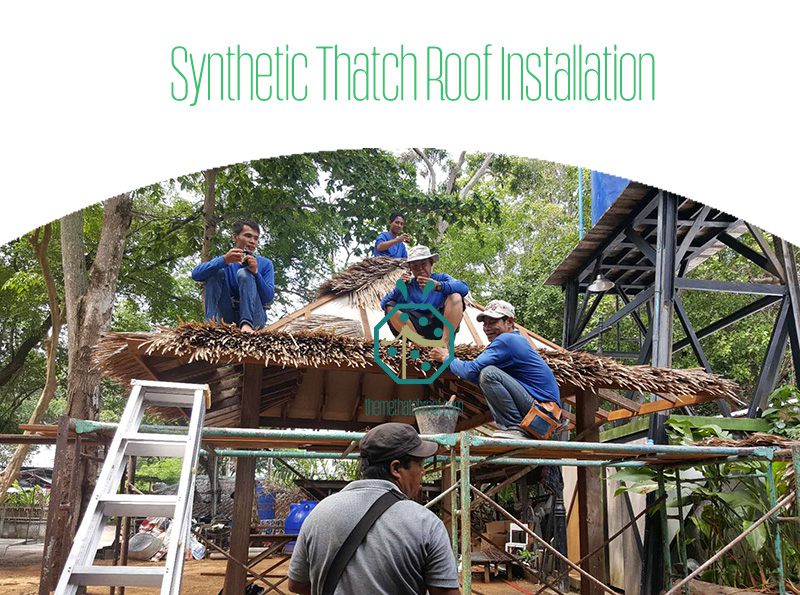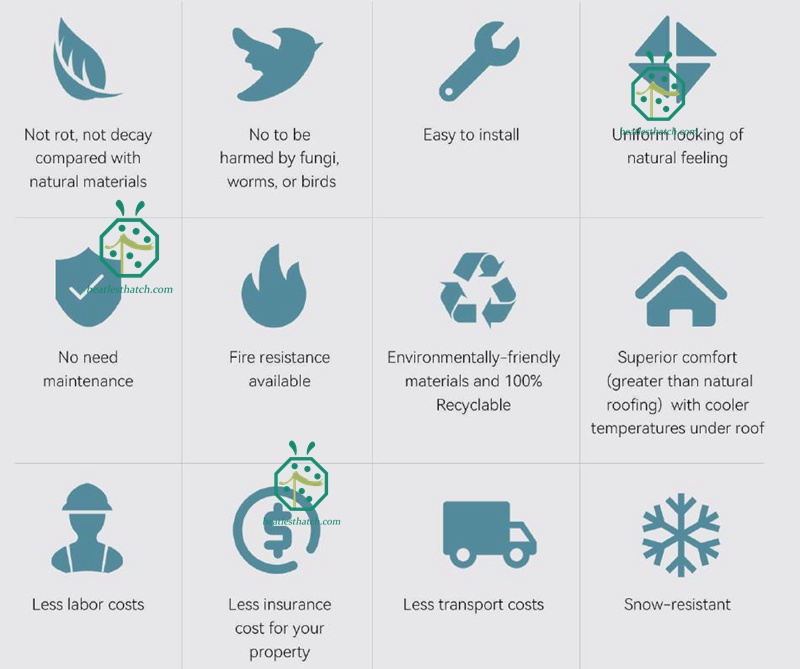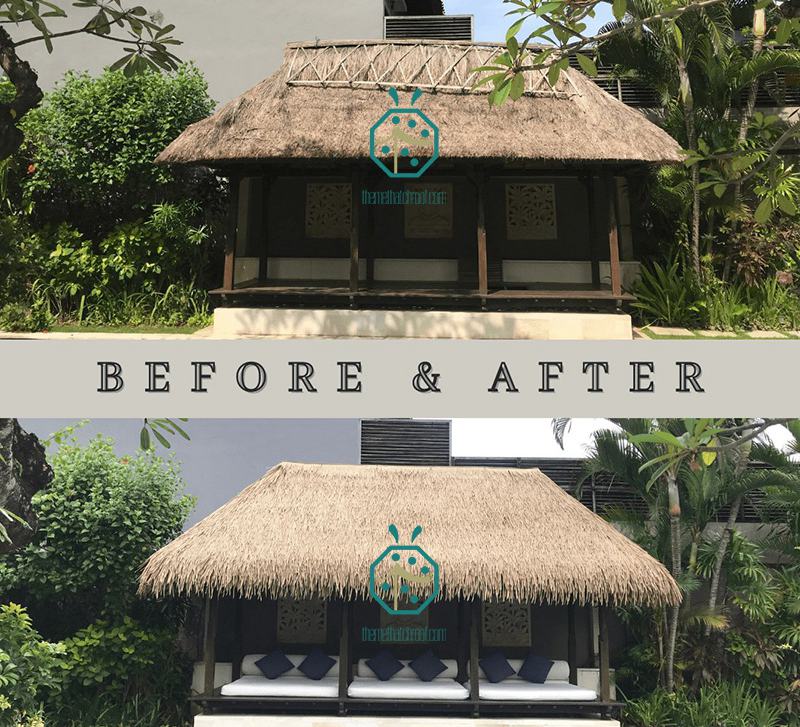When comparing the usage costs between natural thatch roofing and artificial thatch roofs from a long-term investment perspective, several factors should be considered:
1. Material Cost:
Natural thatch roof requires the procurement of actual grass or reeds, which can vary in price depending on the region and availability. Artificial thatch roofing, on the other hand, is manufactured and typically has a more consistent pricing structure. Natural thatch roof needs to replace much more frequently, natural alang alang thatch roofs need to replace every 4-6 years, natural Mexican palm thatch roofs need to replace every 3-5 years, natural African reed thatch roofs need to replace every 6-8 years with properly maintained. However, no matter artificial reed thatch roof, artificial alang alang thatch roof, or artificial palm thatch roof, all of them could last 15-20 years, so, if we consider the material cost from a longer period, natural thatch roof materials are not certainly more economic than artificial thatch roofing materials.
2. Installation cost:
Natural thatch roofing needs to be installed very thick, and needs to consider very carefully for the water leakage and other maintenance factors, so, it usually requires skilled and professional labor to install correctly, which will result in high costs. On the other hand, artificial thatch roofing is usually designed to be easy to install, so it requires lower professional skills, thereby reducing installation costs. Among all artificial thatch products, artificial palm thatch roof is easiest for installation.

3. Maintenance cost:
Natural thatch roofing needs regular maintenance and upkeep due to its properties such as insect infestation, wind damage, and decay. This includes regularly replacing worn-out or damaged thatch, as well as affecting the normal operation of hotels during maintenance. This continuous maintenance will involve additional labor and material costs, hotel closure losses, and other costs. However, simulated thatch roofing, due to the use of antioxidants, flame retardants and other additives, has strong durability with minimal maintenance, thereby reducing long-term maintenance costs.
4. Durability and longevity:
Natural thatch roofing has a limited lifespan and is susceptible to damage from weathering, decay, and insects. This means that it needs to be replaced more often, resulting in higher costs. Artificial thatch roofing is durable, weather-resistant, UV and pest-resistant. Take natural alang alang roof as an example, it decay within 3-5 years, however, artificial alang alang thatch roof only needs to be replaced every 15-20 years, which greatly prolongs the service life and reduces the replacement cost.

5. Insurance and fire safety:
Some insurance policies charge higher premiums for natural thatched roof structures because they are considered to have a higher fire risk. Using synthetic thatch roofing, which is usually flame retardant or non-combustible, usually reduces insurance costs.
6. Aesthetic looking:
From the perspective of aesthetics, natural thatch roofs can provide a natural appearance and texture of the original ecology, giving people a strong rural style. But over time, natural thatch roofing is prone to decay and insect damage, which will greatly reduce its aesthetic appeal. However, simulated thatch roofs products present a very realistic appearance that is difficult to distinguish from natural thatch, making simulated thatch a more flexible and practical choice in indoor and outdoor design.

In summary, although the initial cost of artificial thatch may be higher than that of natural thatch, due to lower maintenance costs, longer service life, and potential insurance benefits, it will greatly save long-term costs. Make it more attractive in certain design styles and have greater commercial investment value! So, whether you’re looking to protect your thatched roofing from the sun or the wind, or enhance its aesthetic value, Beatles Co., has the perfect solution for you.